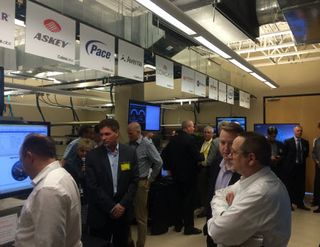Comcast Encouraged by DOCSIS 3.1 Tests

DOCSIS 3.1 is getting ready for its close-up, and Comcast likes what it’s seeing so far.
The deployment era for DOCSIS 3.1 isn’t expected to get underway until sometime next year, but one of the operator’s top execs said the emerging multi-Gigabit platform is already performing as advertised during the early trial phases. In some ways, the technology is already beating expectations before it has even been given the official CableLabs stamp.
“We’re validating things that we had as assumptions,” Tony Werner, Comcast Cable’s executive vice president and chief technology officer, said of the trials, which don’t yet involve paying customers. “I am probably more enthused by what I’ve seen so far than what I thought I would be.”
Expect more of that kind of enthusiasm at this week’s SCTE Cable-Tec Expo in New Orleans, which will offer several sessions and workshops on the emerging DOCSIS 3.1 platform. Vendors, meanwhile, are expected to trot out demos of their DOCSIS 3.1-based network gear and consumer premises equipment.
Among the assumptions Comcast is evaluating are whether cable modem termination systems (CMTSs) can be upgraded to D3.1 via software, and how ODFM (orthogonal frequency division multiplexing) traffic behaves on the access network.
To achieve spectrum utilization that is about 50% more efficient than the 6-MHz-wide channel used in DOCSIS 3.0, DOCSIS 3.1 is using blocks of OFDM and a new forward error-correction scheme called Low-Density Parity Check (LDPC) that will take the place of the current Reed-Solomon approach.
Werner said he is also encouraged that DOCSIS 3.1 will enable Comcast to use 4096-QAM modulation, particularly in the downstream, which will enable the MSO to deliver more bits per hertz than what it is getting today with 256 QAM and DOCSIS 3.0. DOCSIS 3.1 is also expected to enable Comcast and other MSOs to use a variety of modulation profiles.
Multichannel Newsletter
The smarter way to stay on top of the multichannel video marketplace. Sign up below.
Comcast isn’t detailing how many D3.1 trials are presently active, but Werner said enough are underway to give it a means of analyzing how the technology is operating on a cross-section of plant and service areas.
As for deployments of DOCSIS 3.1, Werner said to expect Comcast to make some initial headway in 2016 and “lots of progress” in 2017.
Look for more on Comcast’s early work with DOCSIS 3.1 technology in one of the Multichannel News show dailies at Cable-Tec Expo. Visit our 2015 SCTE Cable-Tec Expo microsite for more show-related news.
